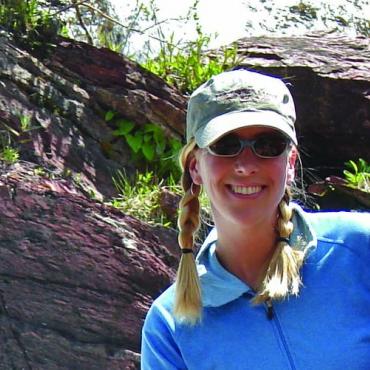Raising Wild Kids (On Purpose)
On a walk up Suce Creek the other day, we took my one-and-a-half year old son out of the backpack and let him loose creekside. He headed straight for the water and was thigh-high in snowmelt before my husband or I could catch him. Anders didn’t care; he was immersed in nature, just like the dogs, just like many of us strive to be.
We weren’t trying to teach Anders anything on the banks of Suce Creek; we just wanted to get outside for our own sanity. We wanted to breathe yummy air, look for flowers, listen to the birds sing, and the let the dogs run around, but it turns out that the more time kids spend in wild places, the better.
Even in this outside-oriented area we live in, many kids aren’t getting enough wild time, and it not only affects their development, it has implications for the future of society and the environment at large. Many of today’s kids are more apt to play video games, dance along with the Wii, or join social networks on the computer than to play outside.
In Richard Louv’s 2005 book, Last Child in the Woods, he coins the term “nature deficit disorder” to describe this child-nature disconnect. He writes, “children need nature for the healthy development of their senses, and, therefore for learning and creativity.” The computer and TV worlds only engage two senses—sight and hearing—leaving out touch, smell, and taste. Nature is a three-dimensional world, filled with sights, sounds, smells, textures, and for the careful explorer—taste.
Spending time in nature doesn’t just benefit the individual. A 2006 Cornell University study indicated that "participating in wild nature activities before age 11 is a particularly potent pathway toward shaping both environmental attitudes and behaviors in adulthood," according to environmental psychologist Nancy Wells, who is assistant professor of design and environmental analysis in the College of Human Ecology at Cornell.
Wells continues, “Although domesticated nature activities—caring for plants and gardens—also have a positive relationship to adult environment attitudes, their effects aren't as strong as participating in such wild nature activities as camping, playing in the woods, hiking, walking, fishing and hunting."
If you want your child to actively care about the environment and develop into smart, creative adults, make sure they spend lots of time up Suce Creek, in the forest, in the desert, at the beach or tromping around other natural areas.
Tips for Getting Your Child into the Wild
- First and foremost, get yourself outside. Parents are kids’ first role models; let them see you skiing, hiking, and looking for macroinvertebrates in the creek.
- Choose distances and difficulty of hikes, bike rides ,or other adventures based on the youngest child. If the outing is too hard you risk turning kids off to the activity.
- Bring plenty of food and water, and make frequent stops to eat and imbibe. Hydration packs make drinking water easy and fun.
- Visit local ponds or lakes—such as East Gallatin Recreation Area, Fairy Lake or Daly Lake—and skip rocks or cast a line.
- Bring a camera that children can use to capture their version of the fun. Later these pictures can be put into personal scrapbooks.
- Little kids love to dig. Set them up with a little shovel and some dirt and let them go at it.
- Have a scavenger hunt. Make a list of things to find (something furry, something that smells good, something green, something that could be an animal’s home, etc.). Head to Peets Hill, Cherry Creek, or the nearest trailhead and try to find everything on the list.
- For more activities and tips for getting kids outside, check out yourwildchild.com.






